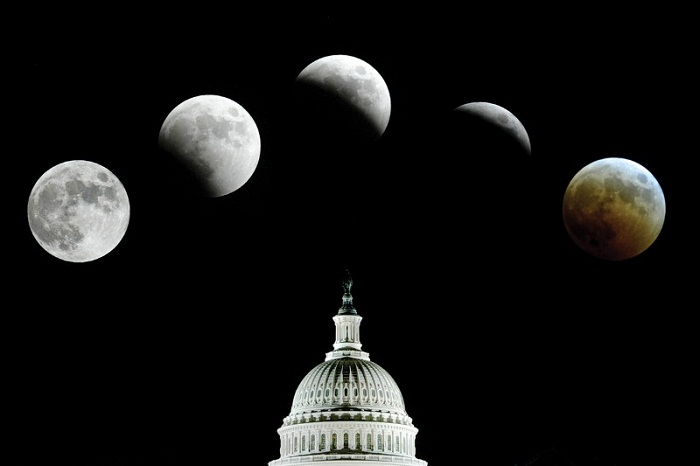Flying gold knocked the moon off course and ruined eclipses

Researchers have come up with a variety of theories to explain this tilt, but none is completely satisfactory, says Robin Canup at the Southwest Research Institute in Boulder, Colorado. “They involve relatively complex processes and rather constrained sets of uncertain parameters.”
Now Kaveh Pahlevan and Alessandro Morbidelli at the University of Côte d’Azur in Nice, France, say they have a better idea. “We did a very simple experiment by considering that the moon-forming impact was not the last – there were others bodies around,” says Pahlevan.
They carried out thousands of simulations of the Earth-moon pair just after it formed, when protoplanets still thronged the solar system. Over tens of millions of years, these protoplanets would repeatedly pass the pair. Occasionally, they would get close enough to gravitationally tug the moon away from the equatorial plane, before crashing into the Earth.
The results suggest that encounters with just a handful of protoplanets, around the moon’s mass or slightly smaller, would have been enough to tilt the moon at the angle we see today (Nature, DOI: 10.1038/nature16137). “It’s a few of those very closest encounters that dominate the overall effect,” says Pahlevan. “There is an element of chance here.”
Rare eclipse
That roll of the dice means it is quite possible the moon could have stayed in its original position. If that had happened, its orbit would line up exactly with the sun and Earth twice every month, treating us to regular solar and lunar eclipses. The actual tilt makes those eclipses much rarer, as the moon only strays into the plane between the Earth and sun twice a year.
We already suspected that these collisions had taken place, says Canup. Precious metals like gold and platinum should have sunk into the Earth’s core as the planet formed, leaving almost nothing on the surface. Instead the metals are relatively abundant. They must have arrived here after Earth formed – carried by the exact same protoplanets that Pahlevan and Morbidelli now say skewed the moon’s orbit.
“There are still uncertainties here, but overall I think this is a very compelling and quite testable hypothesis,” says Canup.
Those doomed space rocks had an impact both literally and figuratively. “If there had not been this late accretion, we would have had frequent eclipses but we would not have the precious metals,” says Pahlevan. With both playing such an important role in the culture of early civilisations, we can only speculate how a few off-course rocks might have altered the course of history.















































